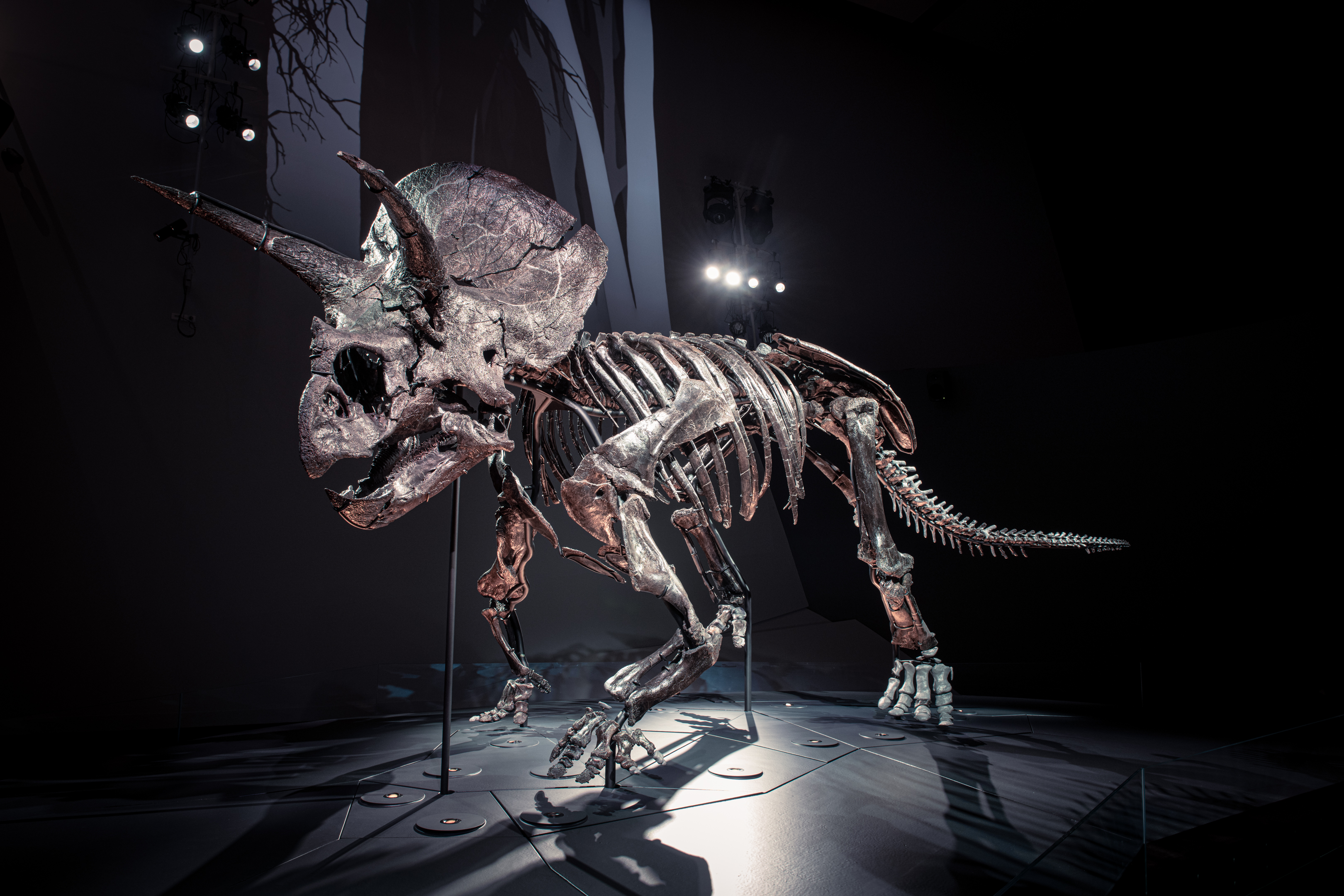Media release
From:
The wait is over. Horridus, the world’s most complete and finely preserved Triceratops will be unveiled for the first time at Melbourne Museum on Saturday 12 March. After 67-million years, audiences will come face-to-face with Horridus as part of the museum’s monumental new exhibition Triceratops: Fate of the Dinosaurs.
The most complete real dinosaur fossil in any Australasian Museum, Horridus is a remarkable sight and the towering centrepiece of this spectacular exhibition. Triceratops: Fate of the Dinosaurs takes visitors on a 67-million-year journey back to the world of the Triceratops through to the present day. Split across two levels and comprised of three acts packed with interactive displays, digital projections, animations and soundscapes this epic exhibition traces the grand story of life over time from the age of the dinosaurs to their descendants still among us: birds.
Beyond palaeontology, Horridus has a great deal to teach us about the fragility of the natural world. Despite being one of the largest, most awesome herbivores ever to walk the planet, Triceratops disappeared in the aftermath of a cataclysmic event that devastated 75 percent of all animal species. The survivors of the age of dinosaurs alive today are reminders of the prospect of catastrophic biodiversity loss and what that might mean for the future of the natural world.
“It is not unusual for museums to collect dinosaur fossils. It is exceptional, however, for a museum to have a specimen of the remarkable quality and significance of Horridus, Museums Victoria’s Triceratops.
"We are thrilled to introduce Horridus to the world, and to have this internationally significant Triceratops on permanent display at Melbourne Museum, this will be a major attraction for visitors to our city and state. To stand before something so unlikely as to be almost impossible, is truly awe-inspiring. Not only will Horridus provide an unmatched and unforgettable experience for our visitors but Triceratops: Fate of the Dinosaurs tells an important, timely and inspiring story about the fragility of nature, and our relationship to the changing environment,” says Lynley Crosswell, CEO & Director of Museums Victoria.
Visitors will meet Horridus up close in a dramatically lit chamber with large-scale projections that illuminate the specimen's 266 bones, including the most famous trio of horns on the planet, and an entire vertebral column. At an impressive 85% complete and weighing around 1000kg, the experience of meeting the most formidable herbivorous animal that has ever roamed the planet will be one of jaw-dropping awe and wonder, highlighting what makes Horridus one of the world’s most important fossil finds in history.
“This is the first time in Australia that we can present in a museum setting a nearly complete dinosaur skeleton of this calibre. Horridus the Triceratops represents the most up to date and cutting-edge articulation of Triceratops and is providing scientists around the world with critical insights not only about this species, but also one of the pivotal moments in Earth’s history. Being permanently housed at Melbourne Museum means this remarkable fossil will be accessible to science for generations to come," says Museums Victoria’s Dr Erich Fitzgerald, Senior Curator of Vertebrate Palaeontology.
“Horridus and its amazing backstory will be a massive drawcard for Melbourne Museum, inspiring wonder, curiosity and delight in dino-fans of all ages for generations to come.
“The museum is constantly evolving and that’s one of the reasons why Victorians love it so much. We’re proud to deliver an awesome attraction that will please crowds and lead to a new understanding of our natural history,” says Minister for Creative Industries, Danny Pearson.
Tickets to the exhibition will be free with Museum entry, however pre-booking is required as entry will be timed.
Horridus will be on permanent display in Triceratops: Fate of the Dinosaurs at Melbourne Museum from March 12 2022 supported by the Victorian Government.



 Australia; VIC
Australia; VIC


